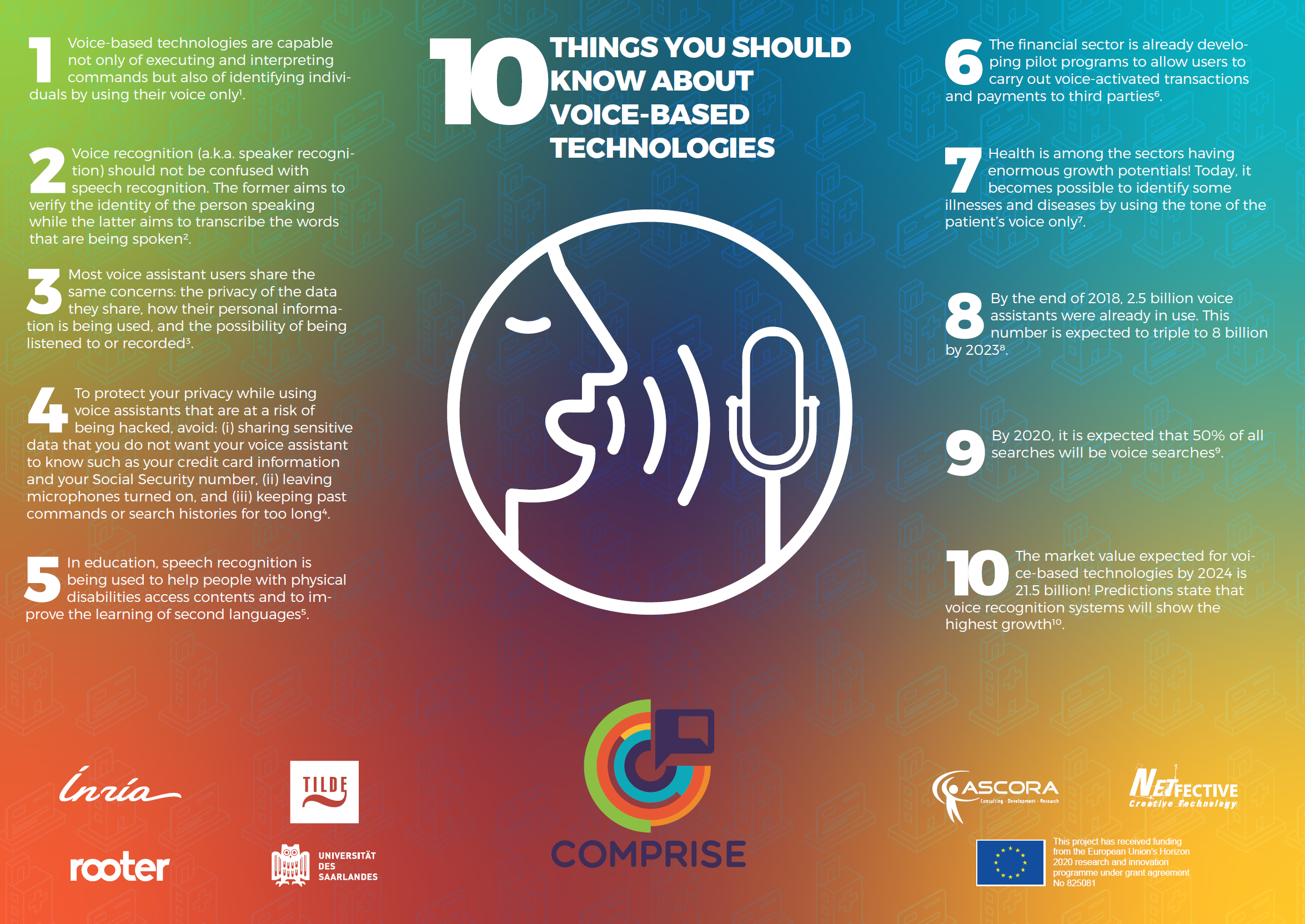- Voice-based technologies are capable not only of executing and interpreting commands but also of identifying individuals by using their voice only [Ref 1].
- Voice recognition (a.k.a. speaker recognition) should not be confused with speech recognition. The former aims to verify the identity of the person speaking while the latter aims to transcribe the words that are being spoken [Ref 2].
- Most voice as
- sistant users share the same concerns: the privacy of the data they share, how their personal information is being used, and the possibility of being listened to or recorded [Ref 3].
- To protect your privacy while using voice assistants that are at a risk of being hacked, avoid: (i) sharing sensitive data that you do not want your voice assistant to know such as your credit card information and your Social Security number, (ii) leaving microphones turned on, and (iii) keeping past commands or search histories for too long [Ref 4].
- In education, speech recognition is being used to help people with physical disabilities access contents and to improve the learning of second languages [Ref 5].
- The financial sector is already developing pilot programs to allow users to carry out voice-activated transactions and payments to third parties [Ref 6].
- Health is among the sectors having enormous growth potentials! Today, it becomes possible to identify some illnesses and diseases by using the tone of the patient’s voice only [Ref 7].
- By the end of 2018, 2.5 billion voice assistants were already in use. This number is expected to triple to 8 billion by 2023 [Ref 8].
- By 2020, it is expected that 50% of all searches will be voice searches [Ref 9].
- The market value expected for voice-based technologies by 2024 is 21.5 billion! Predictions state that voice recognition systems will show the highest growth [Ref 10].
References:
[Ref 1] What is a voice assistant and how will it change our lives? IEBS, Innovation & Entrepreneurship Business School
[Ref 2] Difference Between Voice Recognition and Speech Recognition, Total Voice Technologies
[Ref 3] 41% of voice assistant users have concerns about trust and privacy, report finds, TechCrunch
[Ref 4] Can smart speakers be hacked? 10 tips to help stay secure, Norton
[Ref 5] Speech Recognition for Learning, Reading Rockets
[Ref 6] Voice and Speech Recognition in Banking – What’s Possible Today, Emerj Artificial Intelligence Research
[Ref 7] Voice recognition in Medicine, Pathological Anatomy Service, Hospital Complex of Ciudad Real
[Ref 8] Report: Voice assistants in use to triple to 8 billion by 2023, TechCrunch
[Ref 9] 33 Voice Search Statistics to Prepare You for the Voice Search Revolution, WordStream
[Ref 10] Speech and Voice Recognition Market, MarketsandMarkets
Developer survey: Since you are here and interested in our project, could you please spare a moment to share your concerns and answer 12 questions related to developing voice-enabled apps.





